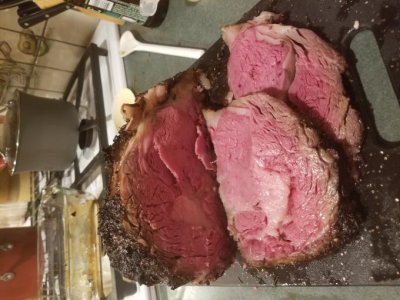noclue said:
I just recently purchased a 3D and on my first smoke it was overshooting temps by 20+ degrees, I just did a auto tune and my numbers are
P 76
I 212
D 303
I don't know if that's good, not sure what the numbers mean any insight would be appreciated.
| |Symbol | |Description | |Setting Range | |Initial | |Note |
| |P | |Proportional Constant | |0.1~99.9(%) | |5.0 | |6 |
| |I | |Integral Time | |2-1999(Sec) | |100 | |7 |
| |d | |Derivative Time | |0-399(Sec) | |20 | |8 |
Note 6 Proportional Constant (P): P is also called the proportional band. Its unit is the percentage of the temperature range. e.g. For a K type thermocouple, the control range is 1500 ° C. P=5 means the proportional band is 75 ° C (1500x5%). Assuming the set temperature (SV) = 200. When integral, I, and derivative, d, actions are removed - the controller output power will change from 100% to 0% when temperature increases from 125 to 200° C. The smaller the P value is, the stronger action will be for the same temperature difference between SV and PV.
Note 7 Integral time (I): Brings the system up to the set value by adding to the output that is proportional to how far the process value (PV) is from the set value (SV) and how long it has been there. When I decreases, the response speed is faster but the system is less stable. When I increases, the respond speed is slower, but the system is more stable.
Note 8 Derivative time (d): Responds to the rate of PV change, so that the controller can compensate in advance before |SV-PV| gets too big. A larger number increases its action. Setting d-value too small or too large would decrease system stability, cause oscillation or even non-convergence.
Auto-Tuning
The Auto-tuning function (also called self tuning) can automatically optimize the PID parameters for the system. The auto-tuning function will use the On/ off mode to heat up the system until it passes the set point. Then let it cool down. It will repeat this about three times. Based on the response time of the system, the built-in artificial intelligence program will calculate and set the PID parameters for the controller. If your system has a very slow response, the auto-tuning could take a long time.
PV = Process Value = Measured Temperature
SV = Set Value = Set (Target) Temperature
Note: I'm done modifying this post now.

All of this information was taken from a document provided by Auber for their PIDs and is not my interpretation or personal knowledge.

 All of this information was taken from a document provided by Auber for their PIDs and is not my interpretation or personal knowledge.
All of this information was taken from a document provided by Auber for their PIDs and is not my interpretation or personal knowledge.
